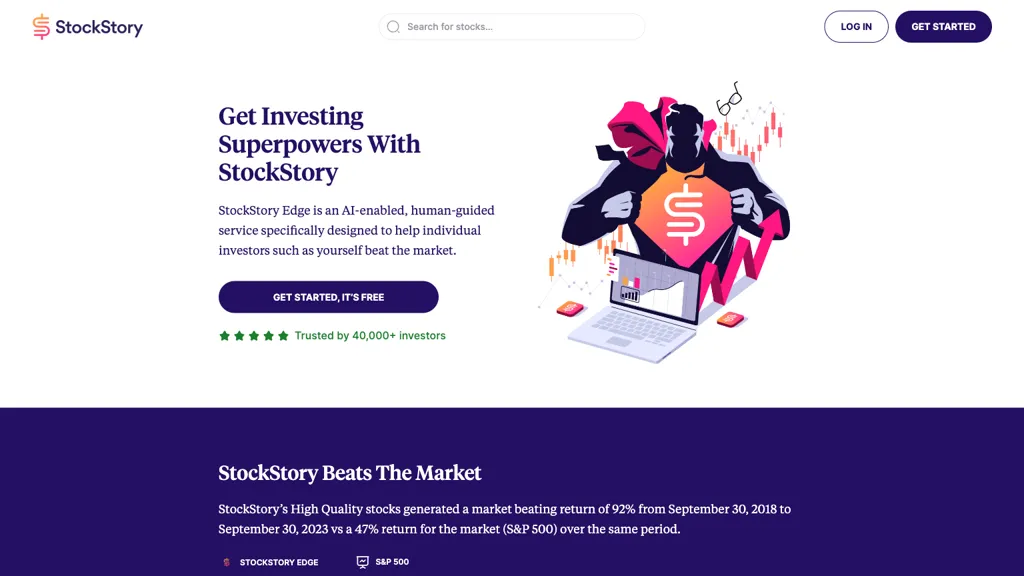AI platforms for trading stocks that forecast and analyze stocks using AI should be compatible with one another. An AI platform that is seamlessly integrated with your current workflows and tools will improve efficiency and efficiency. These are the top 10 suggestions for evaluating the integration and compatibility of these platforms:
1. Check Brokerage Integration
Supported Brokers: Make sure your platform is compatible with your brokerage account or trading platform.
Trade execution: Check whether your platform allows the execution of trades directly with an integrated broker.
Account synchronization - Examine to see if the platform you are using is capable of syncing accounts' balances, transactions and positions in real-time.
2. Check API for Availability
API access: Ensure that the platform offers an API (Application Programming Interface), which allows developers to create custom tools and automate workflows.
API documentation - Verify that the API's example and usage scenarios are well documented.
Rate limits. Verify that the API you're considering has reasonable rates and is able to handle the volume of your use.
3. Integration of Third-Party Tools
Popular Tools: Make sure the platform integrates with other applications, like Google Sheets and Excel.
Data export/import. Ensure your platform can import and export data easily from other tools.
Extensions/Plugins: Make sure your platform supports plugins and extensions to add more functionality.
4. Test Compatibility Operating Systems
Desktop compatibility. Check that your preferred operating system (Windows, macOS, Linux) is supported.
Mobile compatibility: Check whether the platform provides an app for mobile devices on iOS and Android.
Web-based Access: Make sure you can connect to the platform using a browser to increase flexibility.
5. Examine Data Integration Capabilities
Data sources. Check that the platform is equipped with multiple data integrations (e.g. data sources for market, social media sentiment news feeds, etc.).
Real-time Data Feeds: Check to see if your platform provides real-time analysis.
Historical data import: Determine if the platform permits importing historical data for backtesting or analysis.
6. Evaluate cloud and on-premise compatible
Cloud-based platforms: Make sure the platform can be accessed from anywhere that has an internet connection.
On-premises Solutions: If you would rather deploy on premises ensure that the platform is compatible.
Hybrid options: Check whether the platform supports an hybrid model that combines cloud and on-premise capabilities.
7. Make sure to check for Cross Platform Syncronization
Device synchronization. Make sure that settings and data are synchronized across all platforms (desktops mobiles tablets).
Verify that changes made to one device reflect on the other devices.
Offline access: Verify whether your platform provides limited data access and functionality when offline.
8. Examine the compatibility of trading Strategies
Algorithmic or automated trading: Ensure that the trading platform supports these strategies.
Custom indicators: Determine if you can utilize custom indicators or scripts.
Backtesting strategy Check to see if the trading platform supports backtesting with historical data.
9. Assess Security and Compliance
Data encryption: Check whether the application uses encryption to secure data in transit and at rest.
Authentication Check to determine if your platform has a secure authentication method (e.g. 2-factor authentication).
Regulatory compliance: Verify that the platform is compliant with relevant laws (e.g. GDPR, FINRA or SEC).
10. Test Scalability and Performance
Scalability: Make sure your platform can handle an increase in data and users to ensure that it is able to expand with your company.
Performance under load: Check whether the platform is responsive under high-volatility conditions.
Utilization of resources: Make sure that the platform is using system resources effectively (CPUs, memory, bandwidth).
Bonus Tips:
Users' feedback: Look for reviews and comments from users in evaluating the site.
Trial period: Try the trial period for free or demo to experience the system's integration with your current workflows and tools.
Customer Support: The platform needs to offer robust support when it comes to integration problems.
You can test the compatibility, integration, and efficacy of AI stock trading platforms by following these guidelines. See the top ai investment platform examples for blog tips including chatgpt copyright, ai stock picker, chatgpt copyright, best ai for trading, ai for stock trading, best ai trading app, chatgpt copyright, chart ai trading assistant, ai trade, ai for trading and more.

Top 10 Tips For Assessing The Regulatory Conformity Of Ai Stock Predictive/Analytical Platforms
Regulation compliance is an important element to evaluate trading platforms that use AI. Compliance assists in ensuring that the platform is operating within the legal frameworks and safeguarding personal data of the users. These are the top 10 suggestions for assessing the regulatory compliance of these platforms:
1. Verify licensing and registration
Regulators: Confirm that the platform is licensed and registered by the appropriate financial regulatory authority (e.g. SEC, FCA, ASIC, etc.) in your nation.
Broker partnership: Ensure that brokers that are a part of the platform are licensed.
Public records: Visit the official website of the regulator to see the status of registration, as well as the history of violations.
2. Assess the privacy of your data Compliance
GDPR: If your business is located or serving users within the EU, ensure your platform is compliant with the General Data Protection Regulation (GDPR).
CCPA For Californian users, check compliance with California Consumer Privacy Act.
Data handling policies: Go through the policy of the platform on privacy and data security to ensure that it clarifies exactly how data from users are stored, used and shared.
3. Evaluate Anti-Money Laundering (AML) Measures
AML Policies: The platform should have solid AML (Anti-Money Laundering) policies that detect the money laundering process and stop it.
KYC procedures: Determine whether the platform is following Know Your Customer (KYC) procedures for verifying user identities.
Transaction monitoring: Determine whether the platform is able of monitoring transactions and reporting any suspicious activities to the relevant authorities.
4. Make sure that you are in Compliance with Trading Regulations
Market manipulation: Make sure the platform has measures in place to protect against manipulation of the market like spoofing or wash trading.
Types of orders. Check that the platform is in compliance with the regulations pertaining to order types (e.g. there's no illegal stop loss hunting).
Best execution: Make sure to determine if the platform adheres best execution practice which guarantees that trades will be executed at the lowest price.
5. Assessment of Cybersecurity's compliance
Data encryption. Make sure your platform has encryption to protect user data both in transit and at rest.
Incident response: Verify that the platform has a crisis response plan in place to deal with cyber-attacks or data breaches.
Certifications: Check if the platform is accredited for cybersecurity (e.g. ISO 27001, SOC 2)
6. Transparency Evaluation and Transparency Evaluation and
Disclosure of fees. Make sure that all charges and fees are disclosed clearly, including any additional or hidden costs.
Risk disclosure: Check if the platform provides clear risk disclosures, especially when it comes to high-risk trading or leveraged strategies.
Performance reports - Check to see if there are precise and transparent reports on performance made available by the platform to its AI models.
7. Check for compliance with international regulations
Cross-border trading If you are trading internationally, make sure your platform is compliant with the laws in all jurisdictions that apply to it.
Tax reporting: See whether the platform has tools or reports that help users to comply with tax regulations.
Compliance with sanctions: Verify that the platform follows sanctions and does NOT allow transactions or trading with countries or entities that are banned.
8. Review the record-keeping process and audit trails
Records of transactions: The platform needs to keep detailed records of the transactions that are used for auditor and regulatory reasons.
Recordings of user activity: Check whether the platform tracks users' activities, such as logins or trades as well as changes to the settings for your account.
Audit-readiness: Find out if the platform will be able to produce all required documentation and logs needed for a possible regulatory audit.
9. Evaluation of Compliance with AI Specific Regulations
Algorithmic trading regulations: If using a platform that supports algorithmic trading, ensure it is in compliance with relevant regulatory frameworks like MiFID II or Reg SCI, in Europe as well as the U.S.
Fairness and bias: Check whether the platform modifies or checks its AI models for ethical and fair trading.
Explainability: Certain laws require that platforms provide explanations to AI-driven decisions or predictions.
10. Review User Comments and Regulatory Historical History
Reviews from users: Perform research to evaluate the reputation of the platform for the regulatory compliance.
Check the regulatory history to determine if there have been any penalties or fines imposed for infractions of regulations.
Third-party auditors: Make sure that the platform is regularly audited by third-party auditors to make sure it is adhering to regulations.
Bonus Tips:
Legal consultations: You may want to consult an attorney to establish if the platform is compliant with applicable regulations.
Trial period: Make use of a demo free or trial period to evaluate the compliance features available on the platform.
Customer support - Check that the platform has the capacity to assist with any compliance related concerns or questions.
These tips will help you determine the level of compliance for AI trading platforms which can predict or analyze price of stocks. This way you can choose a platform which is legal, and safeguards your. Compliance is important as it does not just reduce the risk of legal liability, but also builds trust and confidence in the platform. Follow the recommended the full details for more examples including best ai stock prediction, trading ai tool, ai software stocks, best stock prediction website, ai in stock market, free ai tool for stock market india, ai for trading stocks, ai for trading stocks, invest ai, ai in stock market and more.
